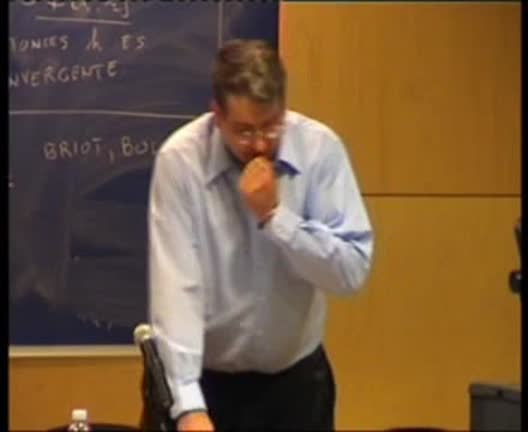Objectes multimèdia amb l’etiqueta: Sistemes dinàmics
Resultats de la cerca
Unstable motions in Celestial Mechanics
Accés obert
10 d’abr. 2024
One of the oldest problems in dynamical systems is the stability of the Solar System. That is, consider N bodies moving following Newton's law of gravitation, one of them with large mass (the Sun) and the others with small masses (the planets). If one neglects, the gravitational interaction between planets, the classical Kepler's laws assert that the planets move on ellipses. Then, one wants to understand whether the effect of the planets mutual attraction causes long term changes on the shape and relative position of the Keplerian ellipses.
Nowadays, it is known that the answer to the stability of the Solar system is rather nuanced and that stability and instability coexist for nearby initial conditions. In this talk I will explain how to construct unstable motions in this model, which lead to drastic changes in the semimajor axes, eccentricity and inclination of these ellipses.
Nowadays, it is known that the answer to the stability of the Solar system is rather nuanced and that stability and instability coexist for nearby initial conditions. In this talk I will explain how to construct unstable motions in this model, which lead to drastic changes in the semimajor axes, eccentricity and inclination of these ellipses.
Poincaré i la Teoria KAM. Setmana de la Ciència (nov-2003)
Accés obert
1 de nov. 2003
La teoría KAM representó en el siglo XX uno de las mayores revoluciones en Sistemas Dinámicos. Se cita a Henri Poincaré como uno de los fundadores de los Sistemas Dinámicos modernos. Leyendo sus obras, y en particular Les méthodes nouvelles de la Mécanique Celeste, se puede ver lo cerca que estuvo de descubrir ya en el siglo XIXl a existencia de movimientos cuasi-periódicos para sistemas próximos a los sistemas integrables. Porque no descubrió Poincaré la teoría KAM? Que razones matemáticas, humanas y psicológicas explican esto? El objetivo de nuestra charla es el de dar elementos de respuesta a estas preguntas. La Historia de las Matemáticas nos muestra que los grandes descubrimientos se fraguan y maduran para eclosionar en el momento preciso. El sexto sentido que indica cuando un problema estámaduro para ser resuelto es una de las mejores armas del investigador matemático. La conclusión es que mediante el estudio crítico de la Historia Matemática se puede desarrollar este sexto sentido.
- ← Anterior
- 1 (current)
- Següent →



